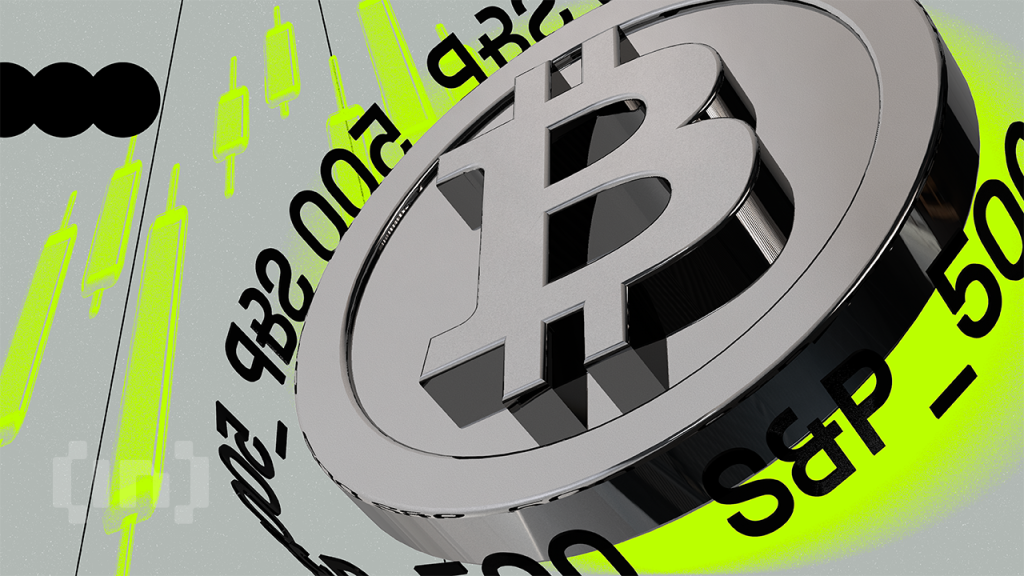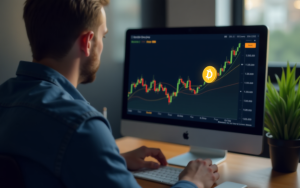Bitcoin as a Hedge Against Inflation and Currency Debasement

Fed Chair Jay Powell admitted this past July to a lack of understanding of inflation. This bolstered many investors’ belief that Bitcoin was the ultimate hedge against inflation. However, as the debate over Bitcoin’s inflation-hedge case heats up, it’s worth exploring both sides of the argument.
Bitcoin (BTC) as protection against rampant inflation has been a topic of discussion for years, with both supporters and detractors voicing opinions. Some argue that the fixed supply and decentralized design make it an attractive investment. On the flip side, others are more circumspect, citing high volatility and lack of intrinsic value.
Arguments aside, adoption is expanding, with more and more investors turning to BTC as an inflation hedge and store of value. In this article, we’ll explore both sides of the debate, beginning with Bitcoin maximalists Michael Saylor and Max Keiser.
What is a Maximalist?
A maximalist is someone who is convinced that Bitcoin is the best and most important cryptocurrency and should be the dominant digital currency. They believe that Bitcoin’s unique properties make it superior to other cryptocurrencies and fiat money.
Maximalists argue that other cryptocurrencies are inferior and unnecessary and that Bitcoin is the only cryptocurrency that truly matters.
Ethereum, Cardano, and Shiba Inu have a maximalist following as well, but Bitcoin seems to engender the most arguments between competing camps.
Bitcoin Maxis: Michael Saylor and Max Keiser
Bitcoin maximalists like Michael Saylor, CEO of MicroStrategy, and Max Keiser, host of the Keiser Report, have long touted BTC as a superior investment to traditional currencies. They argue that the decentralized design, fixed supply, and immutability make it a better hedge against inflation than traditional investments.
Saylor has been a vocal advocate of Bitcoin, famously investing over $2 billion of his company’s treasury into the cryptocurrency. He has argued that Bitcoin is a “digital gold” that can protect against the erosion of purchasing power caused by inflation.
Similarly, Keiser has argued that it is a better investment than gold, calling it “digital gold on steroids”. He has predicted that Bitcoin’s price could reach as high as $220,000 in the near future, driven in part by inflationary pressures on traditional currencies.
While Bitcoin maxis have long touted the benefits of Bitcoin, skeptics argue that it is not a viable investment for those looking for stability and security. Despite Michael Saylor and Max Keiser’s claims that Bitcoin is a superior investment to traditional currencies, notable investors like Warren Buffett and Peter Schiff remain unconvinced.
As the debate over effectiveness as a hedge against inflation continues, it’s worth exploring both sides of the argument to determine if Bitcoin is a viable investment option.
The Skeptics: Warren Buffett and Peter Schiff
Not everyone is convinced that Bitcoin is a viable hedge against inflation. Some notable skeptics include Warren Buffett, the CEO of Berkshire Hathaway, and Peter Schiff, CEO of Euro Pacific Capital.
Buffett has been a long-time critic of Bitcoin, famously calling it “rat poison squared” and a “mirage”. He has argued that it has no intrinsic value and is not a productive asset like stocks or bonds. His right-hand man, Charlie Munger, is even more vociferous for his disdain of Bitcoin.
Peter Schiff has similarly been critical of Bitcoin, calling it a “fad” and a “speculative bubble”. He has argued that it lacks intrinsic value and its high volatility makes it a poor investment choice.
Inflation vs Currency Debasement
While Bitcoin’s effectiveness as an inflation hedge may be up for debate, it may serve as a hedge against currency debasement.
Currency debasement occurs when a government intentionally reduces the value of its currency by printing more money or engaging in other forms of monetary policy. This can lead to a decrease in the purchasing power of the currency and can cause inflation.
Inflation, on the other hand, is a general increase in the price level of goods and services in an economy. While inflation and currency debasement are related, they are not the same thing.
Inflation occurs for a variety of reasons, including supply and demand imbalances or changes in consumer behavior.
Currency debasement is caused by deliberate government policy. Such as the Fed flooding the economy with printed money during the Covid pandemic. This is referred to as quantitative easing or QE.
The Risk of Quantitative Easing
The goal of QE is to encourage borrowing and spending by lowering interest rates and increasing the availability of credit, thus boosting economic growth and inflation. However, QE also carries the risk of devaluing a country’s currency and increasing inflation if not managed carefully.
Understanding the distinction between inflation and currency debasement is crucial in evaluating Bitcoin’s potential as protection against financial instability. While inflation can be caused by a variety of factors, currency debasement is a result of deliberate government policy.
As witnessed during the Covid pandemic, quantitative easing was used by governments to increase economic growth and inflation – but presented significant downsides – including the devaluation of a country’s currency.
In this context, Bitcoin’s decentralized design and fixed supply make it an attractive alternative to traditional currencies, particularly in countries where currency debasement is a concern.
Bitcoin as a Hedge Against Currency Debasement
Bitcoin’s design and fixed supply make it immune to government manipulation and control. Its scarcity and resistance to inflation make it an attractive alternative to traditional currencies, particularly in countries where currency debasement is a concern.
Bitcoin’s ability to fight currency debasement is supported by its adoption as legal tender in El Salvador. El Salvador’s decision to adopt BTC was partly in response to the country’s struggle with inflation and currency debasement. By adopting Bitcoin, El Salvador hoped to provide its citizens with a more stable and secure form of currency.
The Case for Bitcoin as an Inflation Hedge
Despite the skepticism of some investors, there are several arguments in favor of it as an inflation hedge.
Firstly, Bitcoin’s fixed supply means that it cannot be subject to the same inflationary pressures as traditional currencies. There will only ever be 21 million BTC in existence, which means that its value is not subject to dilution through inflation.
Secondly, the decentralized design of Bitcoin means that it is not subject to the same manipulation and control by central banks and governments as traditional currencies. This provides an added layer of security for investors who are concerned about government intervention in their investments.
While the fixed supply and decentralization make it an attractive investment for those looking for stability and security in uncertain times, the value of Bitcoin is also closely tied to its scarcity.
Yet, its true value may not be in its scarcity alone. Bitcoin scarcity is a nuanced topic that is worth exploring further.
The Value of Scarcity
One of the most commonly cited arguments for Bitcoin’s value is its fixed supply. There will only ever be 21 million Bitcoin in existence, which means its value is not subject to inflationary dilution. However, the true value of Bitcoin’s scarcity may not be what many investors expect.
The value of Bitcoin is not just about its limited supply, but also about the ability to verify ownership and transfer of ownership. BTC’s scarcity is not just a matter of quantity, but also of ownership.
Scarcity and transferability make it a valuable asset for those looking for a secure and verifiable store of value. Bitcoin’s easy transferability and verifiability of ownership on the blockchain set it apart from traditional assets like gold or real estate.
Yet, market forces also tie the value to other assets. Supply and demand determine its value, making it vulnerable to significant price fluctuations in a short period of time. While its scarcity and transferability provide a degree of security, they do not guarantee stable returns.
Despite the risks and uncertainties, Bitcoin’s scarcity and transferability could make it a valuable asset for those looking for a secure and verifiable store of value. As the world continues to battle economic uncertainty and market volatility, more and more investors may turn to BTC as a potential hedge against instability.
Inflation vs Currency Debasement
While Bitcoin’s effectiveness as an inflation hedge may be up for debate, it may better serve as a hedge against currency debasement. Currency debasement occurs when a government intentionally reduces the value of its currency by printing more money or engaging in other forms of monetary policy. This can lead to a decrease in the purchasing power of the currency and can cause inflation.
Inflation, on the other hand, is a general increase in the price level of goods and services in an economy. While inflation and currency debasement are related, they are not the same thing. Inflation can occur for a variety of reasons. Such as supply and demand imbalances or changes in consumer behavior.
Deliberate government policy causes currency debasement.
Bitcoin as a Currency Debasement Hedge
A decentralized design and fixed supply make it immune to government manipulation (at least for now) and control. Its scarcity makes it an attractive alternative to traditional money, particularly in countries where currency debasement is a concern.
Its recent adoption as legal tender in El Salvador supports its ability to serve as a hedge against currency debasement. By adopting Bitcoin, El Salvador hopes to provide its citizens with a more stable and secure form of currency.
The Future of Bitcoin as an Inflation Hedge
Despite the risks and uncertainties, its popularity as an inflation hedge is likely to continue to grow. As the world continues to grapple with rising inflation and economic uncertainty, more and more investors are likely to turn to Bitcoin as a potential hedge against inflation.
Bitcoin’s increased adoption, including its legal tender status in El Salvador, is expected to boost its use as a currency. This, in turn, could further increase its value and its appeal as an investment.
Final Thoughts
Jay Powell’s admission that he has a poor understanding of inflation has led many investors to consider BTC. Bitcoin’s fixed supply, decentralization, and protection against currency debasement make it appealing to those seeking stability and security. This is despite uncertainty surrounding its future as an inflation hedge.
However, it is important to remember that investing in Bitcoin carries risks. Bitcoin’s high volatility means that it can be subject to significant price fluctuations in a short period of time. Making it a risky investment for those looking for stable returns. Its lack of intrinsic value also makes it vulnerable to speculative bubbles and market manipulations.
Additionally, Bitcoin’s short history and lack of regulatory oversight means that it is still subject to legal and regulatory risks.
The ultimate answer to whether Bitcoin can tackle inflation remains unknown. However, its growing adoption and use suggest that it is becoming a force to be reckoned with. Despite having both advocates and skeptics.
As the debate over Bitcoin continues, investors need to consider its potential benefits and risks before deciding whether to invest.
Disclaimer
The information provided in independent research represents the author’s view and does not constitute investment, trading, or financial advice. BeInCrypto doesn’t recommend buying, selling, trading, holding, or investing in any cryptocurrencies












